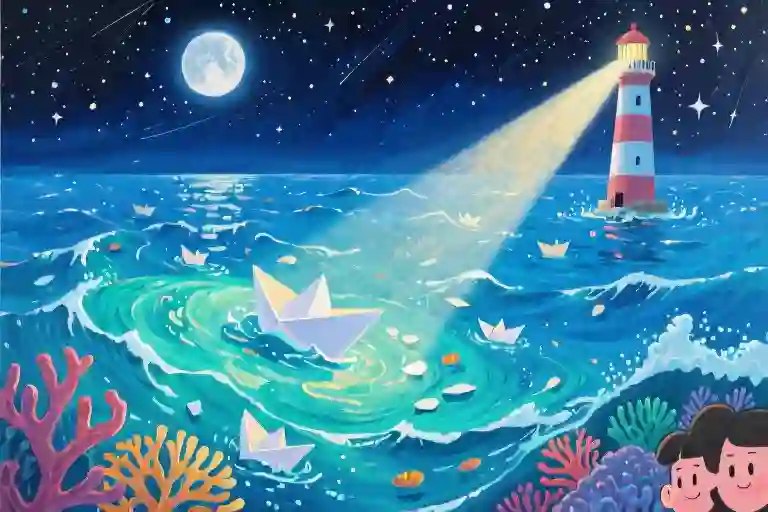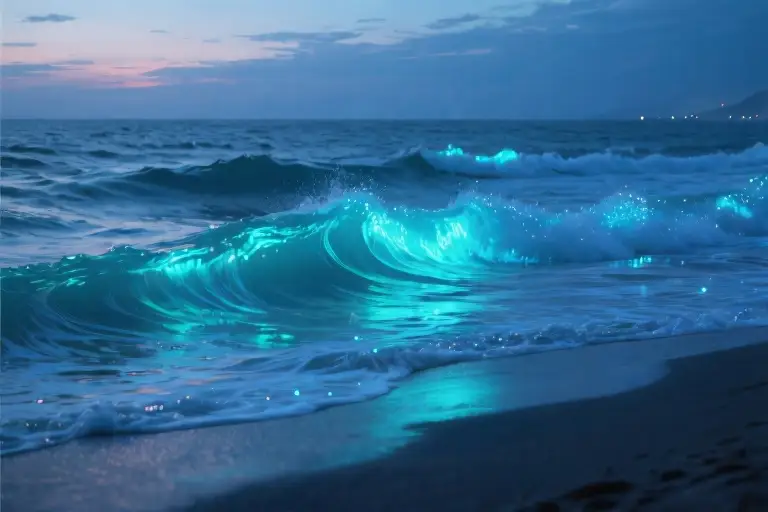I hope you don’t blame yourself for how hard you were to hold. That weight you carry isn’t baggage—it’s ballast. You’ve always been the ocean in a world of teacups, too deep for small talk that skims surfaces, too vast for relationships built like paper boats meant for puddles. There’s a particular ache when someone mistakes your depths for emptiness, when they toss casual maybes into your waves expecting shallow waters. But what if that very intensity isn’t a burden to apologize for, but a beacon waiting to be recognized? Let’s navigate why you often feel like a storm confined in miniature worlds not built for your scale.
Most days, you move through life feeling like a tidal force in a rain gauge society. Conversations stop where your continental shelf drops off, leaving others paddling in the safe shallows while your currents run fathoms deep. It’s exhausting explaining why you need more than weather-talk, why ‘how are you’ deserves more than a reflex answer. That exhaustion settles in your bones like salt crust—not because you’re too much, but because so many come equipped with teaspoons when you require diving bells.
Remember those moments when someone promised to explore your depths, only to retreat when they felt the pressure change? Their paper boats dissolving at the first real wave? That sinking sensation isn’t failure—it’s filtration. Emotional depth survival begins when we stop mistaking accessibility for value. Your vastness naturally repels those who only love coastlines; your wildness terrifies those who prefer still ponds. This isn’t rejection—it’s the ocean rejecting what doesn’t belong in its ecosystem.
Here’s what they never tell sensitive souls: Being half-seen cuts deeper than invisibility. That coworker who compliments your work but mocks your intensity, that lover who admires your passion from dock-side safety—these partial connections leave salt in wounds you didn’t know were open. So you build locked rooms for your sacred parts, not from shame but from sacred geometry. Some spaces simply aren’t meant for tourist feet.
Authentic connection feels rare because true swimmers are scarce. In our shortcut-addicted culture, few want to earn their sea legs when ankle-deep wading provides instant gratification. But your waters demand immersion—they reward those willing to navigate the glorious discomfort of real submersion. This isn’t about being difficult; it’s about being dimensional. Your emotional boundaries aren’t walls but natural formations shaped by currents of self-preservation.
Consider this: What if your ‘too muchness’ is actually evolutionary advantage? In a world starved for authenticity, depth becomes currency. Those wild undercurrents carry nutrients for creativity most never tap. Your vastness houses ecosystems of insight shallow waters can’t sustain. Protecting emotional energy isn’t retreat—it’s conserving resources for the rare connections worthy of your inner tides.
So breathe. That salt on your skin isn’t residue from failed relationships—it’s your natural habitat. The loneliness you feel isn’t evidence of brokenness but of rare composition. Like the ocean surrendering her secrets only to those who respect her rhythms, your depths will reveal themselves to hands that know how to hold without containing. For now, trust that paper boats weren’t designed for your horizons. Your harbor awaits true vessels.
When Oceans Meet Paper Boats: Decoding the Depth Dilemma
That quiet ache when someone holds just fragments of you—it’s not your failure to be containable. Neuroscience reveals why these ‘half-seen’ moments sting: your anterior cingulate cortex flares like warning beacons when others arrive with hollow promises. This primal betrayal response evolved to protect tribes from unreliable allies, yet modern relationships often trigger it through emotional shortcuts.
Consider Maya’s story—a marine biologist whose partner left claiming she was “too intense for morning coffee chats.” His farewell note read: “I wanted calm shores, not your endless depths.” Classic paper boat language. These messengers carry three unmistakable signatures:
- The Maybe Pocket: Vague future-tense declarations (“We might sail somewhere someday”)
- Fragile Construction: Absence of concrete commitments
- Tide-Dependent Navigation: Effort fluctuating with convenience
Why do deep souls instinctively blame themselves? Mirror neuron overload plays tricks. Your capacity to fully immerse makes you project equal depth onto others. When they skim surfaces, you assume it’s your ocean that’s “too much”—not their inability to dive. This neural misfire creates false accountability for their emotional illiteracy.
Paper boat relationships leave distinctive wreckage patterns. You’ll find:
- Apologies for your own tides (“Sorry I’m feeling so deeply today”)
- Self-editing to fit smaller containers
- That hollow echo when sharing sacred things met with distracted nods
Psychologists call this depth dissonance—the agony of having your vastness reflected as distortion in shallow waters. It’s not that you’re hard to hold. You simply require hands that understand buoyancy, palms shaped by navigating undercurrents.
So why do we keep reaching for those who only know puddles? Perhaps because we mistake their fascination with our waves for swimming capability. A tourist admiring stormy seas from shore isn’t preparing to dive. Their oohs and aahs sound like readiness until the first real wave hits.
That moment when you start hiding coral reefs of your soul? It’s not retreat—it’s intelligent energy conservation. Like whales developing sonar to avoid noisy ship routes, you’re learning to detect paper boat vibrations before they breach your boundaries. Your locked rooms aren’t prisons; they’re natural harbors while you recalibrate your depth radar.
What if your oceanic nature isn’t the problem but the diagnostic tool? Those who drown in your shallows were never equipped for any sea. Their sinking vessels simply reveal what was always true. So why apologize for tides that wash away what couldn’t stay?
From Depths to Guiding Light: Reclaiming Your Oceanic Power
That moment when someone looks at you with confusion after you share a thought that feels utterly transparent to you? It’s not your complexity failing them. It’s their paper boat capsizing in your waves. Being told you’re “too much” often means you’re precisely enough for ecosystems larger than most imagine. What others call wildness is actually your untamed capacity to feel currents they’ve never sailed.
Consider the humpback whale’s song—inaudible to humans until hydrophones revealed symphonies spanning ocean basins. Like those frequencies, your emotional bandwidth operates on wavelengths shallow communicators lack instruments to detect. This isn’t deficiency; it’s evolutionary refinement. Studies on sensory processing sensitivity show neurological differences in deep processors: thicker gray matter in regions governing empathy and pattern recognition. Your perceived “intensity” is literally hardwired brilliance.
Mapping Your Oceanic Identity
Every sea has unique topography. Yours can be charted through three dimensions:
- Depth: How far beneath surface interactions do your meaningful connections live? Do conversations about weather feel like discussing wallpaper to someone craving murals? This vertical measure tracks your tolerance for triviality.
- Salinity: Oceans contain approximately 35 grams of salt per liter—their preservative against stagnation. Your personal salinity represents the unique essence sustaining your ecosystem. Is it humor that pickles hardship? Curiosity that preserves wonder? Identify what keeps your waters from turning brackish.
- Vastness: Horizontal scope matters. Can you hold paradoxes? Entertain opposing truths simultaneously? Like the Pacific cradling both phosphorescent bays and volcanic trenches, your capacity for cognitive expanse determines what worlds fit within you.
Try this self-assessment: Next time someone says “you’re overthinking,” note what depth they interrupted. When criticized for being “too emotional,” measure what salinity they found overwhelming. These reactions become buoys marking your continental shelf.
The Relationship Investment Index
People approach connection with varying equipment. We can quantify this:
\text{Swim Commitment Score} = \frac{(\text{Presence} + \text{Curiosity}) \times \text{Time}}{\text{Judgment}}Paper boat candidates typically score low due to high judgment denominators and minimal presence. Contrast someone who:
- Asks follow-up questions about your unfinished thought
- Remembers your coral reef analogy from three conversations prior
- Sits comfortably in your contemplative silences
These swimmers generate exponential returns. Neuroscience confirms reciprocity: when University College London studied deep conversations, MRI scans showed synchronized brain activity between participants—actual neural resonance.
Transforming Currents into Creative Reefs
Your subconscious isn’t a dark abyss but a nutrient-rich twilight zone. Like hydrothermal vents feeding entire ecosystems, those swirling “overthoughts” can cultivate astonishing life. Try this conversion method:
- Harvest the plankton: Journal swirling thoughts daily without editing. These fragments become creative biomass.
- Build coral scaffolds: Select one fragment weekly to develop through metaphor (e.g., “my anxiety as bioluminescent jellyfish—beautiful warning signals”).
- Seed symbiotic relationships: Share creations only with confirmed swimmers. Their feedback acts as cleaner shrimp maintaining your reef’s health.
Artist Louise Bourgeois transformed childhood trauma into monumental spider sculptures. Oceanographer Sylvia Earle channeled isolation into deep-sea exploration. Your uncharted territories hold similar generative power. What seems like dangerous riptides often propel unprecedented discovery.
Preparing Your Lighthouse
Empowerment requires protection. Before we explore constructing emotional breakwaters (next chapter), solidify this truth: Your depth disturbs shallow waters because you’re continental, not coastal. Those who complain about your undertow were standing where tsunamis reshape shores.
When you stop apologizing for your tides, something extraordinary happens. Like the moon’s gravitational certainty, you begin attracting fellow celestial bodies. Sailors don’t curse the sea’s immensity; they learn navigation. You’re not a storm to be weathered but an ocean to be explored—with the right crew and vessels.
Your vastness isn’t excess space waiting to be filled. It’s sacred territory where meaning breeds in the pressure-dark. Consider that marine snow—organic debris drifting downward—feeds more life than surface plankton. What others dismiss as your “overthinking snowfall” sustains entire ecosystems within you. Tomorrow, we’ll build lighthouses that honor, rather than diminish, these fertile depths.
From Locked Rooms to Lighthouse Gates: Building Your Emotional Levee System
That ache when you hide sacred parts of yourself? It’s the echo of paper boats bumping against your shores. We retreat into locked rooms not from fear of being seen, but from the exhaustion of being half-seen—that peculiar pain where someone gazes at your surface ripples while ignoring the continental shelves beneath. What if instead of bolted doors, we built lighthouses? Structures that don’t conceal your depths, but signal who deserves to navigate them.
I used to mistake boundary-setting for fortress-building. Piling up ‘no trespassing’ signs until I’d walled myself into solitary confinement. But true emotional protection isn’t about shrinking your vastness to fit someone’s aquarium. It’s about engineering levees—flexible barriers that filter tidal waves while allowing true swimmers passage. Your depth deserves intelligent guardianship, not permanent lockdown.
The Three-Tiered Levee System
First Tier: The Sediment Filter
Before concrete barriers, engineers lay sedimentary layers. Start here by identifying what actually requires protection—not everything needs fortification. Last Tuesday, Maya realized her morning journaling ritual needed guarding, while her opinions on neighborhood zoning didn’t. She created a ‘sacred sediment’ list:
- Creative visions in incubation
- Childhood wounds still tender
- Spiritual experiences that defy explanation
The filter question: ‘If this were shared, would its violation cause tectonic shifts in my core?’ If not, let it flow freely. Conserving energy for true essentials is half the battle in protecting emotional energy.
Second Tier: The Gate Mechanism
Lighthouses have rotating lenses, not bricked-up windows. Design your entry protocols using behavioral cues rather than rigid rules. Notice how shallow swimmers move: they demand immediate access to your depths while offering only ankle-deep vulnerability. They speak in ‘you’ statements (‘You’re so mysterious!’) rather than ‘I’ revelations (‘I struggle with intimacy because…’). Watch for the paper boat giveaway—vague future promises (‘Maybe we could…’) without present-tense action. Your gates open when someone demonstrates swim capacity: consistent depth in their own sharing, comfort with your silences, curiosity without interrogation.
Third Tier: The Maintenance Channel
Levees collapse without monitoring. Set lunar-cycle check-ins:
- Map where energy leaked this month (that coffee date draining you for hours)
- Note where boundaries held (gracefully exiting the ‘fix my life’ conversation)
- Adjust sediment filters (promotion added work stress? Tighten creative protection)
Like ocean currents, your needs shift. Last quarter, Ben needed strict barriers around his divorce grief; now he’s testing partial sharing with a trusted colleague. Maintenance isn’t failure—it’s honoring your fluid nature.
Reading the Buoys: Early Warning Systems
We often ignore the beacons because we romanticize potential. Remember Lena’s diary entry about Mark? ‘He called my poetry “cute”—a paper boat word if ever there was one.’ She’d missed earlier buoys: his discomfort when she mentioned therapy, his joke about ‘overthinking things.’ Shallow swimmers reveal themselves through their relationship with mystery: they pathologize uncertainty (‘Why can’t you just be happy?’) rather than respecting it as depth’s natural habitat.
True depth-compatible partners show swim-ready behavior through:
- Comfort with parallel diving (sharing separately but equally)
- Respect for resurfacing time (no demands for instant processing)
- Offering ballast, not anchors (support that lifts rather than pins)
The woman who sends articles saying ‘This reminded me of your theory’? She’s demonstrating depth attention. The man who asks ‘How did that dream make your body feel?’? He’s swimming beside you.
Deep Cove Connections: Casebook from the Trenches
Examine Elara’s cove-building diary:
‘Month 1: Shared sediment layer—my fear of abandonment when people cancel. His response: “I cancel sometimes, but never because you’re “too much.” Here’s how I’ll signal if overwhelmed…”
Notice the reciprocity—he matched her vulnerability depth while offering concrete behavior. Contrast with Marco’s paper boat moment: ‘When I described my mystical experience, he snapped “Enough weird stuff” while scrolling Instagram.’ The rupture wasn’t the comment, but his refusal to navigate discomfort together.
Successful deep connections share three tidal markers:
- Mutual fathoming—You’re both taking soundings of each other’s trenches
- Respect for undertow—Permission to retreat without interrogation
- Shared salinity—Alignment on core values despite surface differences
The Armenian painter and Finnish engineer in our case studies? Their surface worlds differed wildly, but they shared oceanic salinity—a fundamental reverence for raw authenticity.
Your Lighthouse Commission
Building emotional boundaries for sensitive souls begins with one stone. Today:
- Choose one sediment to protect (perhaps your creative process)
- Design a gate test (ask a low-risk opinion question; observe if they reciprocate depth)
- Note one buoy you’ll heed (dismissive language about ‘heavy’ topics?)
This isn’t about becoming guarded, but about becoming discerning. Your depths aren’t a haunted cavern to be sealed off, but a vibrant marine sanctuary—worthy of caretaking, open to certified divers. When you stop wasting energy on paper boat patrols, you reclaim reserves for true navigation. Those sacred rooms? Unlock them, install lighthouse lenses, and let your beams call home the swimmers who speak your salt language.
When Depth Becomes Your Compass
You’ve navigated these waters before—the crushing weight of self-doubt when relationships founder, the sting of being perceived as “too much” for wanting authentic connection. That familiar ache when someone mistakes your depths for difficulty, your vastness for neediness. Let’s not revisit those shipwrecks. Instead, consider this: what if your emotional landscape isn’t a problem to solve, but a topography to master?
The Lighthouse Foundation Principle
Boundaries aren’t barricades. That daily practice of saying “my energy stops here” functions like coastal buoys—not to keep vessels away, but to prevent collisions with your submerged mountains. Start small: when someone demands instant access to your sacred spaces, try “I need tides, not tornadoes. Let’s revisit this tomorrow.” This simple declaration activates what neuroscientists call your prefrontal boundary-setting circuitry, transforming reactive guilt into intentional guardianship.
Your depth requires swimmers willing to learn new strokes. Notice how free divers train gradually—they don’t plunge to ocean trenches on their first attempt. Seek those who ask “how deep can we go today?” rather than those complaining about wet feet. These are the companions who’ll recognize when your currents shift from turquoise to indigo without demanding color charts.
Navigation Tools for Open Waters
- Depth Sonar Practice: Each morning, chart your emotional coordinates. Ask: “What parts of my ocean feel stormy today? Which bays need protection?” This 90-second ritual builds what psychologists call fluid self-awareness—the antidote to being “half-seen.”
- Salinity Test for Relationships: When new connections form, observe their reaction to your natural saltiness—the tears, passions, and intensities that preserve what matters. Shallow vessels corrode; true swimmers adapt.
We’ve mistaken visibility for vulnerability. Those locked rooms protecting your sacred self? Think of them as submarine research labs—places where priceless discoveries mature before surfacing. You’ll know when to open viewing galleries. Until then, preserve your pressure-controlled environments. Marine biologists don’t apologize for needing specialized equipment to study abyssal creatures; why should you?
Sailing Beyond the Shallows
Your vastness intimidates shoreline dwellers. Good. Let it filter those carrying paper boats. Remember: oceans don’t shrink to fit puddles. Those rare swimmers seeking you? They’re out there training their lungs, studying your moon cycles, learning to read your swells. You’ll recognize them by their willingness to dive without oxygen tanks—trusting your waters to sustain them.
Set sail toward fellow deep-sea explorers. They’re mapping trenches, not playing in tide pools. With them, you’ll trade the exhausting work of self-minimization for the thrilling discovery of mutual submersion. This is where authentic connection thrives—not in the shallows of convenience, but in the profound darkness where bioluminescent truths glow.
You contain entire ecosystems. Some zones permit snorkelers, others require submersibles. A few trenches remain uncharted even to you. This complexity isn’t a flaw—it’s your hydrographic signature. Stop apologizing for requiring sonar to be seen. Your waters deserve explorers, not tourists.
Tonight, do this: trace one shoreline you’ve surrendered to paper-boat promises. Reclaim that territory. Place a single boundary stone where someone’s “maybe” eroded your coast. Then sleep as the tide returns what was always yours. Tomorrow’s horizon holds vessels built for your depths—and you’ve always known how to navigate home.





